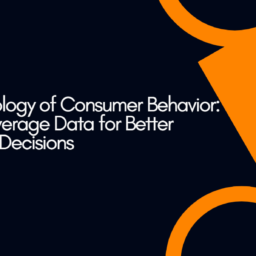In an age where consumers are bombarded with information and choices, minimalist design has emerged as a compelling solution for brands seeking to create a lasting impact. By stripping away the clutter and focusing on essential elements, minimalist design enhances user experience and influences consumer perception in profound ways. This blog explores the significance of minimalist design, its psychological effects on consumers, and how brands can effectively implement this design philosophy.
1. Understanding Minimalist Design
Minimalism in design revolves around the idea of “less is more.” It emphasizes simplicity, functionality, and clarity while eliminating unnecessary elements. Key characteristics of minimalist design include:
- Clean Lines: Straightforward shapes and geometric forms that convey order and sophistication.
- Limited Color Palette: A restricted use of colors, often favoring monochromatic or neutral tones to create a calm and cohesive look.
- Whitespace Utilization: The strategic use of whitespace to guide focus and improve readability, enhancing the overall aesthetic.
- Functional Elements: Design elements that serve a purpose, emphasizing usability over decorative features.
2. The Psychological Impact of Minimalist Design
Minimalist design significantly influences consumer perception and behavior. Here are some key psychological impacts:
A. Reduced Cognitive Load
Minimalist design reduces cognitive overload by presenting information in a clear and concise manner. With fewer distractions, consumers can process information more effectively, making it easier to understand and engage with the brand’s message.
B. Increased Trust and Credibility
A clean and organized design fosters a sense of professionalism and trustworthiness. Consumers are more likely to perceive brands with minimalist designs as credible and reliable, leading to increased confidence in their purchasing decisions.
C. Enhanced Brand Recall
Minimalist design often employs memorable visuals and simple messaging, making it easier for consumers to remember the brand. The straightforward nature of minimalist design helps solidify brand identity and fosters long-term recognition.
D. Emotional Connection
Minimalism can evoke a sense of calm and serenity, creating a positive emotional connection with consumers. This emotional resonance can enhance brand loyalty, as consumers associate the brand with feelings of tranquility and simplicity.
3. Minimalism in Branding and Marketing
Brands across various industries have successfully integrated minimalist design into their branding and marketing strategies. Here’s how:
A. Logo Design
Many modern brands have adopted minimalist logos that are simple yet impactful. Companies like Apple and Nike have streamlined their logos to emphasize recognition and memorability, reinforcing their brand identity.
B. Website and User Interface Design
Minimalist web design enhances user experience by focusing on essential elements and intuitive navigation. Brands like Airbnb and Dropbox utilize clean layouts and clear calls-to-action, making it easy for users to find what they need without distractions.
C. Product Packaging
Minimalist packaging design creates a premium feel, attracting consumers looking for quality and sophistication. Brands like Muji and Aesop employ simple packaging that reflects their commitment to quality and functionality.
D. Advertising Campaigns
Minimalist advertising focuses on strong visuals and concise messaging. Brands like Volkswagen have effectively used minimalist ads to convey powerful messages with limited text, creating a lasting impression on consumers.
4. Implementing Minimalist Design in Your Brand
To harness the power of minimalist design, brands should consider the following strategies:
A. Identify Core Brand Values
Begin by defining the core values and messages you want to communicate. This clarity will guide your minimalist design approach, ensuring that every element serves a purpose.
B. Simplify Visual Elements
Evaluate your existing visual elements and identify areas for simplification. Remove unnecessary details and focus on essential components that convey your brand message effectively.
C. Embrace Whitespace
Utilize whitespace to enhance clarity and readability. A well-balanced use of whitespace can create a sense of sophistication and draw attention to important content.
D. Prioritize User Experience
Consider the user journey when designing your website or product. Streamlined navigation and intuitive layouts contribute to a positive user experience, encouraging engagement and retention.
E. Test and Iterate
Gather feedback from users to understand how they perceive your minimalist design. Use insights to refine and iterate your design elements, ensuring they resonate with your target audience.
5. Case Studies: Successful Minimalist Brands
Here are a few brands that exemplify the impact of minimalist design:
A. Apple
Apple is a pioneer in minimalist design, evident in its product design, advertising, and branding. The simplicity of its interfaces and packaging enhances user experience and reinforces the brand’s premium image.
B. Google
Google’s homepage is a classic example of minimalist design. With a clean layout, simple logo, and a single search bar, Google emphasizes functionality and ease of use, making it accessible to all users.
C. Muji
Muji embodies minimalist design in its products and branding. With an emphasis on simplicity and functionality, Muji’s aesthetic appeals to consumers seeking quality without unnecessary frills.
Conclusion: Embracing Minimalism for Effective Branding
The impact of minimalist design on consumer perception is profound. By prioritizing simplicity and clarity, brands can enhance user experience, build trust, and create lasting emotional connections with consumers. As the digital landscape becomes increasingly crowded, embracing minimalist design principles offers a powerful way to stand out and resonate with your target audience. By adopting a minimalist approach, brands can not only improve their aesthetic appeal but also cultivate deeper relationships with consumers, paving the way for long-term success.




